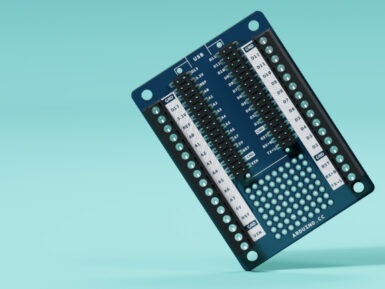
Solar Panel Charge Controller - 10 A
Charge controller for photovoltaic applications controlled by a microcontroller and capable of operating automatically at both 12 and 24 V.
Overview
It allows to provide the right degree of current to the batteries protecting them from an excess of discharge or charge in order to prolong their life cycle as much as possible.
Attention! use only with 12 and 24 V solar panels.
It protects the battery from polarity reversal, automatically enters protection and locks when the load current exceeds the regulator’s range. In case of short circuit, it enters protection and it overload protection.
To avoid complete battery discharge, the regulator will automatically disconnect the load at a certain voltage that cannot be less than 11.2 V for the 12 V battery and 22.4 V for the 24 V batteries.
Tech specs
- Nominal voltage: 12 V / 24 V automatic detection
- Maximum current: 10 A
- Maximum solar panel input voltage: 41 V
- Cut-off voltage: charged battery: 13 V (at 12 V) - 26 V (at 24 V) discharged battery: 11.2 V (at 12 V) - 22.4 V (at 24 V)
- Reconnection voltage: 13 V (at 12 V) - 26 V (at 24 V)
- Voltage drop: < 170 mV
- Dimensions (mm): 133x70x35
- Weight: 150 g
Conformities
Get Inspired

This project displays your activity on a 12c LCD and on the Iot cloud, and temperature readings on the iot cloud

The brand new Nano Screw Terminal Adapter turns up the speed on your prototyping efforts by giving you a fast, reliable way to hook up your boards. This awesome add-on is exactly what seasoned makers have been crying out for, and is now available from the Arduino Store. Let’s take a look at this mini mechanical marvel. A solderless solution With a finished project, you’re likely to make permanent connections to your Nano by soldering it. Even if you’re connecting it using a header strip, the wires, components, sensors and accessories will be soldered, crimped or attached in a permanent way to the controller side of your project. It makes perfect sense to do this, when you’re looking for a reliable connection. The trouble with permanent connections like this is that they’re… well, permanent! Soldering and de-soldering during the design and prototyping stage can become a real chore. And it’s not good for the components or the board itself, either. The Screw Terminal Adapter is what you need. It’s something we’ve been asked for a lot, giving people a way to make robust, fast, easy connections that can be changed just as easily. Easy access to all I/Os The Nano Screw Terminal Adapter features a double row of headers. The Nano drops into the two inner rows, giving you a second, outer set that lets you connecting using jumpers, wires or what have you. Then you have a third row of connectors on either side of the adapter with a screw terminal for each pin. The perfect way to connect wires or components in a reliable, but easily changeable way. It’s never been easier to develop and design a project that with these connection options. There’s even a 9x8 prototyping area with through plated holes for adding extra components, connections or accessories. Of course, this doesn’t have to only be for prototyping. The screw terminal is a long-established, trusted connection option, so there’s no reason it can’t become a





